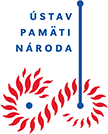HALADOVÁ, Silvia. Reflections of collectivisation propaganda in the daily newspaper Pravda between 1949 and 1950
After the establishment of the communist regime in Czechoslovakia in February 1948, a centralised system of state governance started to introduce in society, which was implemented in agriculture through forced collectivisation, accompanied by various forms of violence and repression. The breakdown of the relationship between the peasant and land led to a fundamental change in the property and social village structure, ultimately leading to the decline of agriculture. The United Agricultural Cooperatives became an instrument of a 'socialist agricultural cooperative system building', and they promised the prosperity and advancement of agricultural mass production, but this soon turned out to be unrealistic. The wealthy peasants, the so-called village rich, against whom the regime introduced an ingenious system of political and economic interventions that led to their social and economic liquidation, were blamed for the general decline of agriculture and severe problems in the population's food supply. The establishment of new principles of countryside socialization became part of the comprehensive reconstruction of society in post-February Czechoslovakia. Press, as a fundamental means of mass communication, represented a particularly accessible way of promoting the goals of the forced collectivisation policy of the Communist Party of Czechoslovakia. The media were subordinate to party interests and state power, and every journalist's work was supposed to serve the interests of the people's democratic regime. In Slovakia, the press organ of the Communist Party of Slovakia, the daily newspaper Pravda, played the most significant role in spreading the propaganda of the ruling party and in the process of influencing and shaping the attitude of the population towards the new concept of agriculture. The tendency to promote the collectivisation theme, which was one of the central themes of domestic news, was misused to influence and manipulate public opinion, with the intention of the communist regime to dominate the whole of society and acquire a monopoly power position. The present study aimed to analyse the collectivisation propaganda published in the daily newspaper Pravda between 1949 and 1950. The study focuses on presenting the ways, forms and intensity of dissemination of purposeful information in the first years of the initial phase of collectivisation, including an assessment of the nature of the articles presented, not excluding their placement in the relevant socio-political context.

Updated at: 15.08.2022
Print Tweet